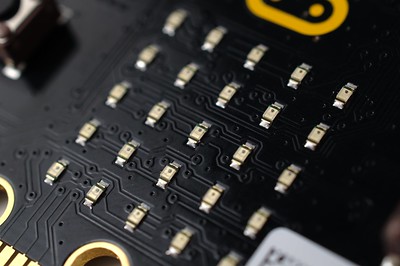By Nathan Bristow on March 24, 2019
For my Assignment 3, I’ve been examining the role of microprocessor platforms and their role in education: specifically the micro:bit created by the BBC and currently in distribution in the NWT.
Featuring original research and analysis on mobile and open learning published as Open Educational Resources (OERs) by professional educators enrolled in the University of British Columbia's Master of Educational Technology (MET) program. Browse and be inspired!

Posted in Mobile Technologies
By Nathan Bristow on March 24, 2019
For my Assignment 3, I’ve been examining the role of microprocessor platforms and their role in education: specifically the micro:bit created by the BBC and currently in distribution in the NWT.
You must be logged in to post a comment.
I LOVE Micro:bits. I heard of them from colleagues a while back but was finally able to get my hands on them and play with a set last year. I think it is great that coding has become so easy with block coding, making it accessible to a wider user base, yet those that are more into it can use Python. As a Chemistry teacher, my students use a lot of digital sensors for data collection for their experiments. The micro:bit has a light sensor, temperature sensor, motion sensor and can wirelessly communicate via radio and bluetooth. I had not heard of the CO2 sensor that Nathan demonstrates in his video, but I think that this is just the beginning of where micro:bits can go. I think they have tremendous potential. I now have 2 sets of the BBC micro:bits and have managed to have them both communicate with each other, I can get one to respond to other once the code has been downloaded on to both micro:bits. The fact that they are small and portable make it a lot easier (mobile) to conduct experiments while using the micro:bit rather than a “regular” digital temperature probe connected to a computer or mobile device, since the micro:bit does not have to be connected to a computer when being used. In fact, the micro:bit is more precise (it displays a LOT of decimal places). The temperature sensor allows the user to calibrate the micro:bit easily – set an input temperature as that read on another accurate thermometer, or set it based on a known phenomenon (e.g melting point of ice, or boiling point of water – like calibrating normal thermometers). The light sensor enables the micro:bit to be used as a spectrophotometer (https://www.instructables.com/id/Microbit-Spectrometry/). The motion sensor can be used as an accelerometer, step counter, compass or even as dice or magic 8 balls. What other uses can you think of??